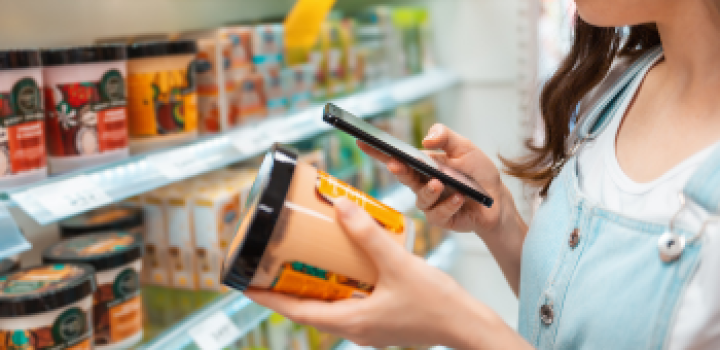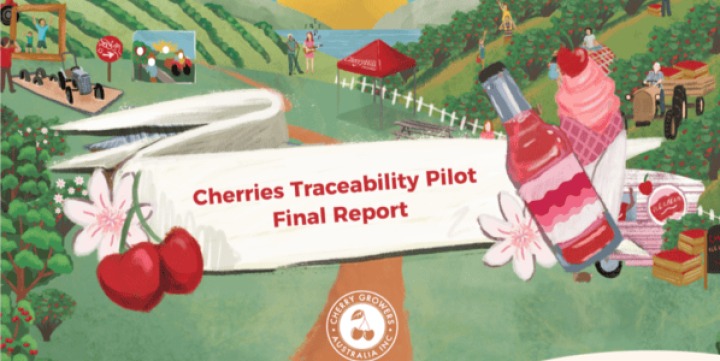The demand for transparency in food supply chains has never been higher. Both consumers and legislators are increasingly prioritising traceability, authenticity and seeking reassurances on the journey of the food they buy and consume, from farm to fork.
This trend offers a significant opportunity for the fresh food industry to build trust and promote high food standards. However, achieving comprehensive traceability across complex supply chains is far from easy, largely due to incompatible systems and a lack of standardised data. Thankfully, GS1 standards, renowned their interoperability, offer a robust solution.
This has been clearly demonstrated by recent “Cherry Plus” pilot projects focusing on brushed potatoes and organic cherries in Australia. Showcasing the potential of GS1 powered QR codes and GS1 Global Location Numbers (GLN) to facilitate digital traceability in agriculture, these trials have demonstrated the power of GS1 standards to enhance supply chain efficiency, boost consumer confidence, and support rapid responses to food safety and biosecurity incidents.
The traceability challenge
While Australia is renowned for its high-quality fresh produce, its horticulture sector faces significant challenges in achieving traceability.

Unlike the livestock industry, which benefits from the National Livestock Identification System (NLIS), Australian horticulture lacks a unified approach to property and product identification. This has hindered responses to food recalls, biosecurity threats and environmental emergencies, which in turn have resulted in major revenue and productivity losses across the sector.
Fragmented data collection methods and incompatible systems have further complicated the issue. Without common data standards, growers, retailers, and government agencies have struggled to collaborate effectively. This fragmentation delays responses, increases food waste and erodes consumer trust, especially in relation food safety.
Streamlining the supply chain
GS1 standards provide a global framework for supply chain identification and data sharing. Incorporating globally recognised GS1 identifiers such the Global Trade Item Number (GTIN) and GLN enables stakeholders to achieve real-time traceability with precision. These standards streamline data integration, reducing the effort required to trace products as the move throughout the supply chain.
The Australian pilots utilised QR codes encoded with the GS1 Digital Link standard to connect physical products to a digital ecosystem of traceability and consumer engagement. These QR codes, embedded with location and product data, allowed users to track items through every critical tracking event (CTE) in the supply chain. Consumers could also access detailed information on provenance, certifications and product freshness by scanning the QR codes with their smartphones.
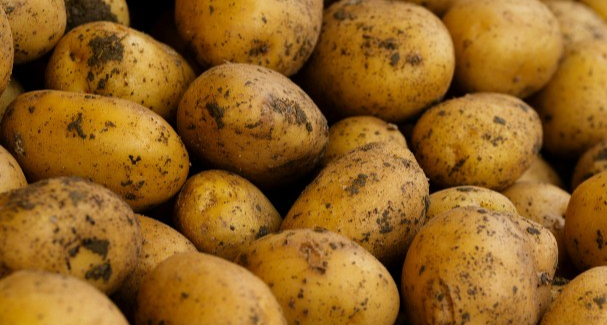
Potato pilot
This trial focused on brushed potatoes from Mitolo Family Farms. GLNs were applied to key locations, including the farms on which the potatoes were grown, packhouses, distribution centres, and retail outlets.
Sensors carefully monitored temperatures and the time spent at each location, revealing inefficiencies that could affect product quality. Real-time data sharing via the FreshChain platform improved visibility across the supply chain, enabling stakeholders to take swift action when required.
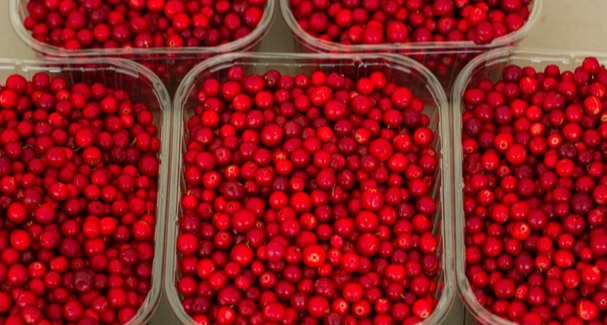
Cherry pilot
In the cherry trial, GLNs were assigned to Cantrill Organics’ orchards, packhouses, and distribution points.
The system successfully tracked cherries from the farm to Woolworths stores, proving the effectiveness of serialised labelling in maintaining product integrity.
Similarly to the potato pilot, FreshChain sensors detected risks such as suboptimal temperatures during transit, allowing for rapid intervention to protect the produce.
Benefits realised
Both pilots achieved impressive results, highlighting several key advantages of implementing GS1 standards in horticulture. This included:
Enhanced visibility
Unique identifiers for locations and products enabled real-time monitoring and data sharing, fostering collaboration among stakeholders.
Rapid response times
During a simulated food safety recall, the GS1-enabled traceability system reduced response times from 24 hours to under 60 seconds. This capability massively reduces risks to consumers and financial losses.
Engaging consumers
QR codes provided consumers with access to interactive web pages featuring videos, recipes and product information while feedback collected via the platform offered valuable insights for growers and retailers.
Reduced waste
Accurate tracking allowed for highly targeted recalls, isolating affected batches and preserving unaffected products.
Export opportunities
Enhanced traceability supported compliance with export protocols and biosecurity requirements, opening up new markets to Australian growers.
Electronic certification
Integrating electronic documentation into the traceability system laid the groundwork for more efficient certification processes, essential for accessing international markets.
Meeting the demands of the informed consumer
A key success of the trial was the direct connection between growers and consumers.
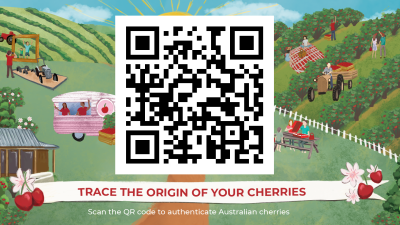
By scanning QR code powered by GS1, consumers gained instant access to detailed information about product origins, production methods and certifications. For example, Mitolo Family Farms shared insights into their sustainable farming practices, while Cantrill Organics highlighted the benefits of organic cultivation.
Such transparency fosters trust and strengthens brand loyalty. Consumers were empowered to make informed purchasing decisions, while growers received actionable feedback to enhance their products. Additional features, such as recipe ideas and online shopping links, further streamlined the consumer experience and encouraged repeat purchasing.
Challenges and opportunities
Despite its successes, the trial did highlight areas for improvement. Limited digital capability among supply chain participants and resistance to data sharing underscored the need for education and collaboration. Going forward, clear guidelines on data ownership, access and privacy will be critical to encouraging widespread adoption.
The trial also emphasised the importance of scalable solutions. Implementing sensors and QR codes at every supply chain stage may require significant investment, particularly for smaller growers. Industry and government support will be crucial in overcoming these barriers and ensuring equitable access to traceability technology.
Shaping the future of horticulture
The GS1-enabled traceability system offers a compelling blueprint for the future of horticulture supply chains. By adopting global standards, the industry can address inefficiencies and prepare for challenges such as climate change and evolving consumer expectations.
For the UK, the insights gained from these pilots could guide initiatives to improve the resilience and competitiveness of domestic food production. Leveraging GS1 standards will not only enhance food safety and reduce waste, it would also position British growers as leaders in transparency and sustainability on the global stage.

